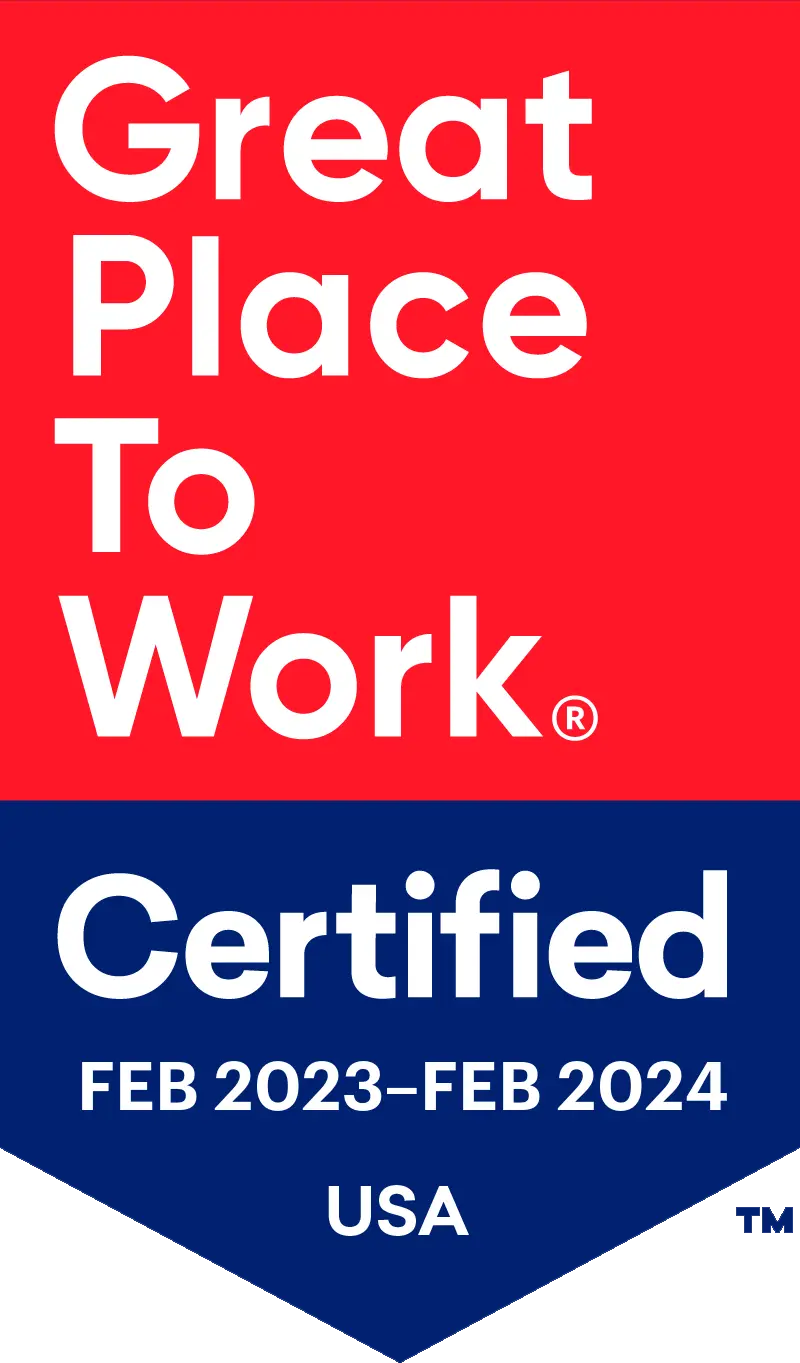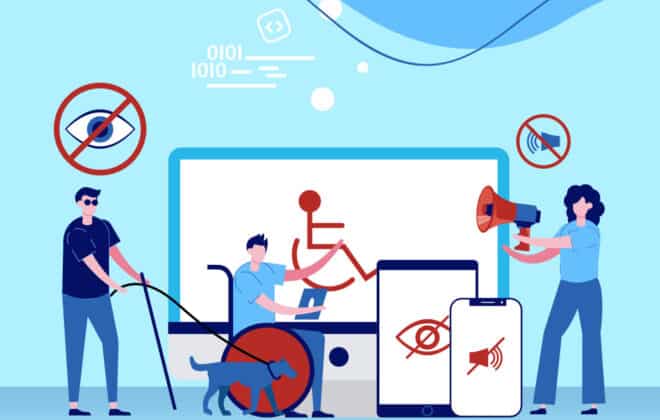In today’s eCommerce world, most customers prefer to purchase from the comfort of their own homes. With the online market growing, customers can buy practically anything online with only a few clicks. Online shopping provides customers with access to various things, brands, and retailers, allowing them to save time and browse for the best price. Because the eCommerce industry is thriving, every company owner must have an online presence to offer their goods and services. It is becoming hard to leave your mark in the online market with numerous online platforms. An accessible website is a plus point.
What Does Accessibility Mean?
Accessibility means that your website is developed using tools and technologies that make your website easily usable for people with situational limitations and disabilities. People with physical, visual, auditory, cognitive, neurological, and many other types of disabilities make up more than 15% of the overall population of the earth. Suppose we add an audience with situational limitations like older people, users with a slow internet connection or in rural areas, multiple devices users, or people with temporary disabilities to the list. In that case, it makes a good chunk of individuals that are often not targetted but can be solid leads for businesses. Website accessibility helps this portion of the population to perceive, comprehend, navigate, and interact with your website. This feature gives your website access to a broader range of users.

What does Accessibility Bring To Your eCommerce Website?
Increased semantics to the code
Traditional website coding defines the website’s structure; however, none of it helps the web browser comprehend the functionality of each component. Web codes use tags and features to allow web browsers to understand the role of different sections in the web pages. However, it still does not help the search engines get the actual meaning of those sections. Developers, who design websites with accessibility in mind, use additional tags to make the websites accessible and perform better by using aria tags. This makes it easier for browsers to know and distinguish between multiple components functionality of websites.
Tagging works wonders for websites with product listings. It makes it easier for web browsers to search for a particular product and redirect users to the product page. Tags like microdata demonstrate the complete information about the product like name, pricing, category, size dimensions, colors, and more. All descriptions appear just as simple text without meaning and context without the microdata tag. It does not make any sense to web browsers.
Enhanced User experience
Several accessibility tools can be highly useful to improve the user experience for e-commerce platforms. Accessibility is highly dependent on creating Site Maps for the web pages to ensure an enhanced UX. Another extremely significant feature is to keep the overall navigation system clear and uniform. This saves the user from confusion because, otherwise, there is a high chance that the user might leave or switch your website.
Including concise and explanatory alt text in your images is also a fundamental yet powerful technique to improve your image usability that also applies to videos. Provide descriptive captions to the videos to increase the range of people who understand and comprehend your video content, especially visually impaired people.
Better search engine optimization
Search engines or web crawlers are incapable of detecting visual elements on your web pages. The major thing that drives the search engines is the available text. It makes more sense to find the relevance between what a user is searching for and the best possible results to show him. Accessibility focuses attention on your website’s language and purpose. As a result, search engines can better perceive and interpret the material on your page.
The use of accessibility tools and the focus on different means of providing content contributes to the search engine benefits of an accessible site. The procedure guarantees that the information is viewed and comprehended by everyone. The easier you make it for the user to access and navigate your website, the more likely your website will rank. This also means that improving semantics or the site navigation not only helps users but also helps the search engines understand the structure of your website. Eventually, the search engines provide users with links to the correct pages of your website where they can find their required information.
A wider range of potential leads
Accessibility to your website benefits the visitor and your e-commerce business by driving more engagement. You target the general traffic and attract unique visitors to your website, which are generally not targeted. Making your website more accessible increases your chances of converting a random visitor to your e-commerce website into a client. Developing a website that gives the same high-quality experience to everyone who visits it worldwide is hard to achieve. However, you can add accessibility elements to make sure everyone navigating through the website can do it with ease, each one, according to their capabilities. With a website that does not take too long to load, has a clean UI, and is easy to navigate even for people with disabilities, it has high chances that the visitor stays for a fair amount of time and even revisit.

Broader market reach
Accessibility tools are versatile enough to reach clients from all over the world and make their experience smoother. These visitors can be non-native English speakers, people from rural areas or developing countries, poor internet connection, people with conditional limitations like broken arm/leg or lost glasses, etc. These people are usually not the ideal target users; hence, when your brand’s website has more opportunities to get recognized, chances are you might find a better reach as the competition is less.
An ideal situation for any e-commerce platform is to reach a maximum number of clients. Not every website follows the accessibility tools. There are very rare e-commerce platforms or businesses using these tools that support disabled individuals because that is their ideal client persona. Building an all-inclusive experience makes your e-commerce business stand out and maximizes your business development possibilities.
Improved public relations
As people increasingly become aware of the technology, digital activism has gained momentum. People are more drawn towards the brands that show value in their services and the brands that take meaningful steps for the issues of high significance in today’s world. The same is the case with brands taking time and money to make their websites accessible.
Web accessibility means a lot for people with disabilities and their loved ones. People were surveyed on this, and it turns out that they are more likely to purchase from such brands or e-commerce platforms that ensure accessibility. People are highly prone to walk away from brands or e-commerce platforms that do not make their websites accessible by people with any disabilities.
Positive response
Disabled people have the right to do everything a normal person can do. Our responsibility is to make sure that everything is easily accessible to them everywhere. There are laws like the Americans with Disabilities (ADA) that make it imperative for all public places to entertain normal and differently-abled people equally. This law also includes websites. Web accessibility is a civil right without any argument for people with impairments.
Although the law does not explicitly indicate or state anything about web accessibility the law is extended enough to be constructed to include the digital domain. The number of web accessibility cases is continuously increasing over the past decade. Reports say that 2,352 web accessibility lawsuits were filed against US businesses in 2021, which is a good 14% increase from 2020. This also includes lawsuits on certain high-profile websites. The number of lawsuits is only increasing with time.
Make sure your website satisfies all the accessibility standards if you want to prevent discrimination accusations and legal action against your website.
The most appropriate way to do this is to receive a Letter of Reasonable Accessibility certifying that the website has been audited for inclusivity and relevant adaptations have been made to suit the needs of impaired people. By doing this, you will be abiding by the legal requirements and promote a good reputation for your business.
Guidelines to make the website accessible
There are several practices to increase the website accessibility for people with disabilities, the elderly, people from rural areas or developing countries, people with slower internet connections, or more. Some of those techniques are listed below:
A color scheme with sufficient contrast
The colors of your website may not appear the same to every user due to different device display settings or the possibility of defects in the users’ eyes. Make sure you choose a color palette that enables the addition of high contrast between the text and the background. This will lead to a smooth reading experience.
Font size and font style
People with weak vision or suffering from any condition find it hard to read the text due to non-ideal font style and size. This leads them to zoom in to your web page, affecting the overall layout of the website. It is better to verify beforehand that the text you’re adding to your web pages is clear enough to be read by everyone. Additionally, make sure that the CTA or the buttons have a text size enlarged enough to notice the visitors easily.
Clean navigation and easier UI
Beautiful colors and texts are not the only things that make your website accessible. A prominent feature of an e-commerce accessible website is to create a UI structure that is uniform and easy to understand.
HTML tags
Adding relevant accessibility supporting tags in the coding enables the search engines to understand the structure and context of the website, especially the aria and role tags. This means if someone searches for any item in the search engines, the results are highly likely to pop up the link to your e-commerce website. This link will take them exactly to the page where the product is listed. More details have been discussed in the previous sections.
Alternative text and captions
Visuals like images, videos, GIFs, or anything else added to a webpage are not useful to people with eyesight issues, hearing impairment, or even by the search engines. While adding anything related to that, double-check that some alternative text and captions are provided to go along. This helps a majority of the visitors to understand the purpose of the picture, or the video added, enhancing the product understanding.
Multiple languages
Not everyone visiting your website will understand the primary language that the website displays. So, you must use plugins or other tools to enable multiple language support for your website.
Final Note
E-commerce websites provide a seamless and stress-free experience for a wider than usual range of users. Not only is it per the law, but it also broadens your client reach and elevates the conversion rate. Following certain accessibility techniques mentioned in the above sections, your website will be all set to entertain a unique range of visitors and leads.


